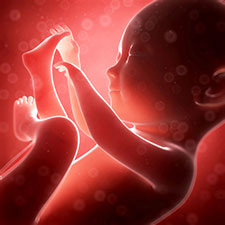Cocaine Health Risks: Harm to Unborn Children and Infants

When cocaine is abused by a pregnant woman, the drug passes right through the placenta and affects the baby as well. Extensive damage to the fetus can result from this exposure.
To start with, cocaine’s stimulating effect not only causes higher blood pressure and fast heart rate in the mother, they do the same thing to the baby. Sonograms of unborn babies have shown these effects while the drug was active. Fetuses exposed to cocaine moved excessively, did not rest in normal patters, sucked continuously and showed other changes. They also manifested withdrawal symptoms if the mother withdrew from the drug before the baby was born.
Fetal death is a possible result due to the separation of the placenta from the uterus caused by cocaine use.
Signs After Birth
If a mother is addicted to cocaine when the baby is born, the infant will be likely to show signs of withdrawal. They may have tremors, muscle spasms, sleeplessness, and difficulty feeding.
Babies born to mothers who frequently abused cocaine during pregnancy sometimes have smaller heads and may be smaller overall. Brains may be smaller at birth and remain smaller than usual thereafter.

An exposed baby may be born prematurely and growth after birth may be delayed. There is also a greater risk of Sudden Infant Death.
Birth defects are more common among babies exposed to cocaine. Defects of genitals, hearts, kidneys, brains, arms or legs and intestines are not uncommon. Some babies are born with a “lobster claw” hand or foot, technically termed ectrodactyly. (This can also result from a genetic defect.)
In several cases, babies have suffered strokes when the mother had cocaine in her system before or during the delivery.
The harm to innocent babies and children is so grievous that any woman of childbearing age should avoid any contact with cocaine. If she finds she is pregnant while using or addicted to cocaine, she should immediately seek health to spare the health and even the life of the child.
References:
 ®
®